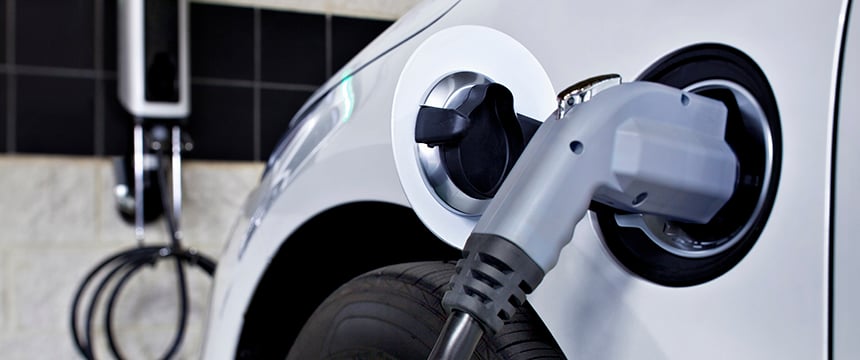Off to the Races: EPA’s Aggressive New Fuel Efficiency Standards Will Fundamentally Reshape How Cars are Made and Powered

On December 20, the U.S. Environmental Protection Agency (“EPA”) finalized its new national greenhouse gas (GHG) emissions standards for new passenger cars and light trucks. These new rules are the most ambitious in history, requiring automakers to meet the strictest fuel efficiency standards ever proposed, and to do so by model year 2026. These aggressive new standards will likely require automakers to shift production to hybrid and/or electric vehicles within the next four years. Such a shift will further increase demand for batteries and lighter vehicle components. To be successful, it will also likely require investments in electric chargers and the transmission upgrades that will be required to maintain grid stability, and/or investments in hydrogen vehicles and fueling stations.
Beginning with model year 2023, the new standards will increase the stringency of fuel-efficiency requirements through model year 2026. While the previous standards required improvements of about one and a half percent per year, improvements of five to ten percent per year will now be required. The expected result of these more stringent standards is that average fuel economy label values will reach 40 miles per gallon (mpg) in model year 2026, as opposed to an expected 32 mpg under the current rules.
The EPA has made it clear that these standards are also intended to set the stage for the Agency’s next round of standards, which will begin with model year 2027. Following President Biden’s Executive Order 14037, “Strengthening American Leadership in Clean Cars and Trucks,” the next phase of rulemaking will apply through model year 2030, and will regulate not only light-duty vehicles, but medium-duty vehicles as well.
The EPA has predicted that substantial public health and welfare benefits will be associated with the resulting reduction in GHG emissions. EPA Administrator Michael Regan stated that the new standards will “aggressively reduce the pollution that is harming people and our planet – and save families money at the same time.”
It is estimated that through 2050, the new standards will reduce GHG emissions by more than three billion tons. That is more than half the total U.S. carbon dioxide emissions in 2019. The EPA expects the benefits of the new rule to exceed the costs by as much as $190 billion. This figure takes into account the reduced impacts of climate change, public health improvements linked to a reduction in pollution, and savings on fuel costs as a result of increased fuel efficiency. Through 2050, the EPA estimates that American drivers will save between $210 billion and $420 billion on fuel costs alone.
Electric vehicles will also be an important part of the way that each manufacturer will ensure that their fleets meet the new standards. By increasing sales of electric vehicles and plug-in hybrid electric vehicles to about 17 percent by model year 2026, EPA predicts that automakers will achieve compliance. This more than doubles the seven percent market share predicted in model year 2023. According to Administrator Regan, these new goals are a step towards an “an all-electric, zero-emissions transportation future.”
Assuming the rule stays in place, it will drive changes throughout the automotive and electrification supply chains. Unless manufacturers phase out production of light trucks and SUVs, those product lines will likely require greater use of hybrid and all-electric drivetrains, along with lighter vehicle components. In turn, that will drive a need for further investments in electric chargers along transportation corridors and at automotive service stations. At the same time, regional transmission organizations, power producers, and electricity retailers will need to quickly identify and plan for upgrades to transmission infrastructure required to maintain grid stability with the anticipated increased demand that will result from an electric automotive fleet. To the extent that renewably-produced “green hydrogen” is adopted as an alternative to electrification, substantial investments in production, transmission, and retail distribution will also be required.
For additional information on the new standards and potential options to comply with them, please contact Pete Tomasi, Amanda Beggs, Bill Re, or your Foley energy or supply chain contact.

